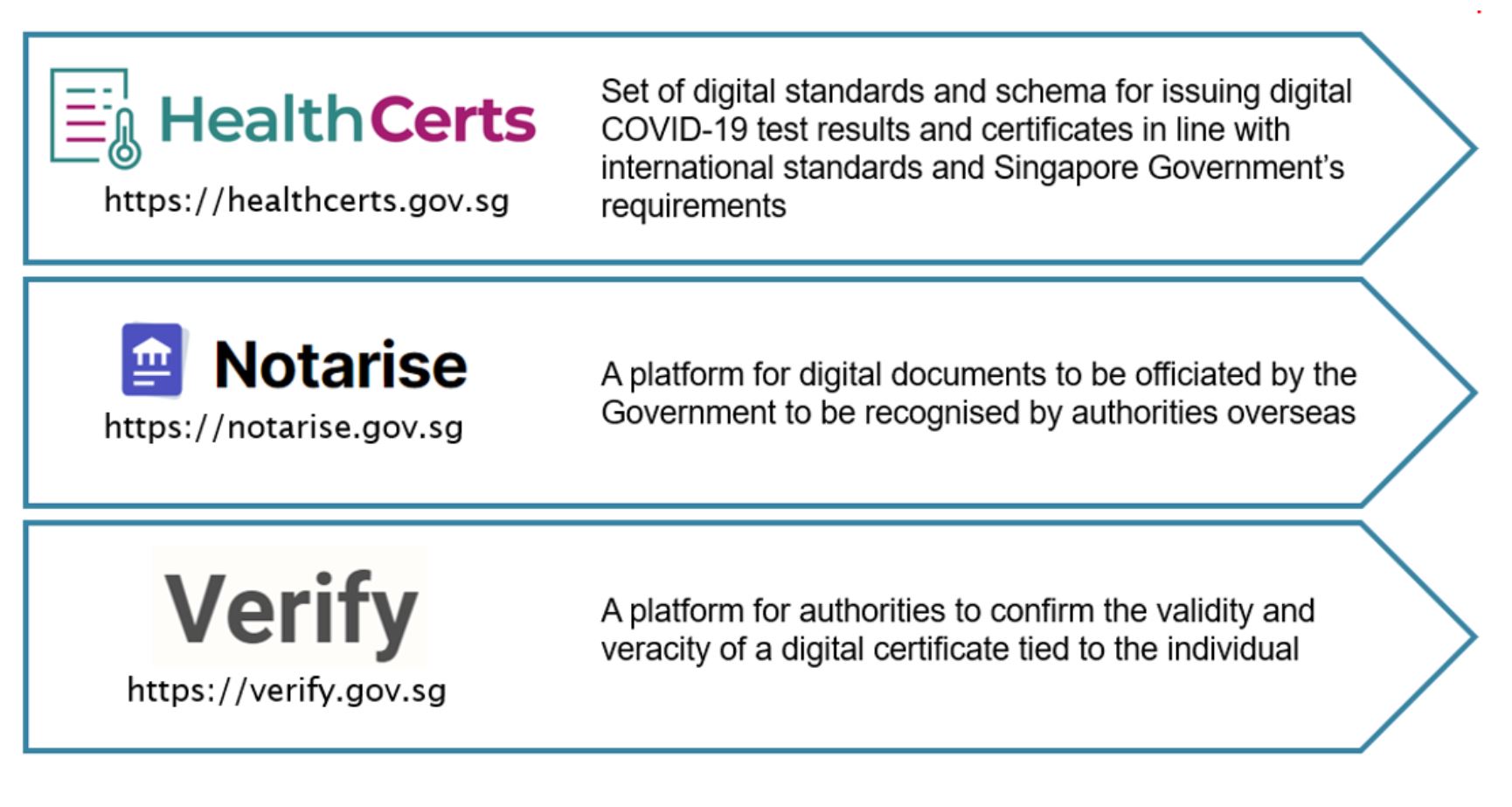
Due to the disruption caused by the global COVID-19 pandemic, the government of Singapore has adopted a new standard for protecting the verification of globally interoperable health documents based on tamper-proof distributed ledger blockchain technology.
The Singapore Government has published HealthCerts – a set of digital open standards for issuing digital COVID-19 test results and vaccination certificates, in line with international standards and the Singapore Government’s requirements.
Beginning on the 10th March, travelers undergoing a pre-departure COVID-19 test at authorised clinics in Singapore would also receive their results in a digital certificate loaded into HealthCerts.
The blockchain framework used to digitally attest HealthCerts is powered by OpenAttestation, which is an open-source document notarisation framework that uses cryptographic hashes for independent verification. Once documents are issued and stored on the blockchain, they can be verified by any auditor making it possible for outside parties to trust the submission source.
The use of digital identity and other assets is overseen by the Smart Nation and Digital Government Group, a part of the Prime Minister’s Office, which oversees the deployment of this new technology. The digital certificate stores identity details (name, national identity number, DOB, etc.) and test details (type, status, date, medical institution details). The QR Code will be sent via email or presented under the SingPass Mobile app.
According to the HealthCerts webpage, for added assurance, Digital Certificates may be digitally notarised by the Government through Notarise to ease downstream verification by ensuring:
- Untampered content – Authenticate the veracity of the Digital Certificate against blockchain hash value
- Trusted provenance – Verify the legitimacy of Digital Certificate according to Singapore’s travel policy requirements and checks that the laboratory (or clinic) is authorised to issue Digital Certificates
- Rightful ownership – Strong identity assurance through SingPass to prevent impersonation
Verify provides an easy, reliable way to ensures digital certificates have not been tampered with and issued/ notarised by a recognised entity.
Supporting the opening of cross-border travel
To support the opening of cross-border travel, there is a need to verify travellers’ identities and their associated health status. Singapore has therefore designed HealthCerts with global interoperability in mind as an open standard. Entities can sign up to issue digital certificates compliant with the HealthCerts standard.
At the moment, AOKpass, Accredify. Collinson and Trybe.ID provide issuance service to clinics and labs such as Quest Laboratories, Gleneagles Hospital and Parkway Shenton Medical Group in Singapore and overseas countries.
As Verify is open-sourced, private companies or governments can develop their own versions of Verify, with their own list of recognised COVID labs or foreign authorities.
Private sector offerings: Affinidi provides document verification services for attesting document authenticity and validation to airlines and airports.
IATA conducts verification against the rules engine of other countries to determine if the test certificate meets the destination country requirements.
The government has said it is keen to work with partners to further the work in this space, which includes further enhancing interoperability, privacy, and verifiability for such certificates.



















